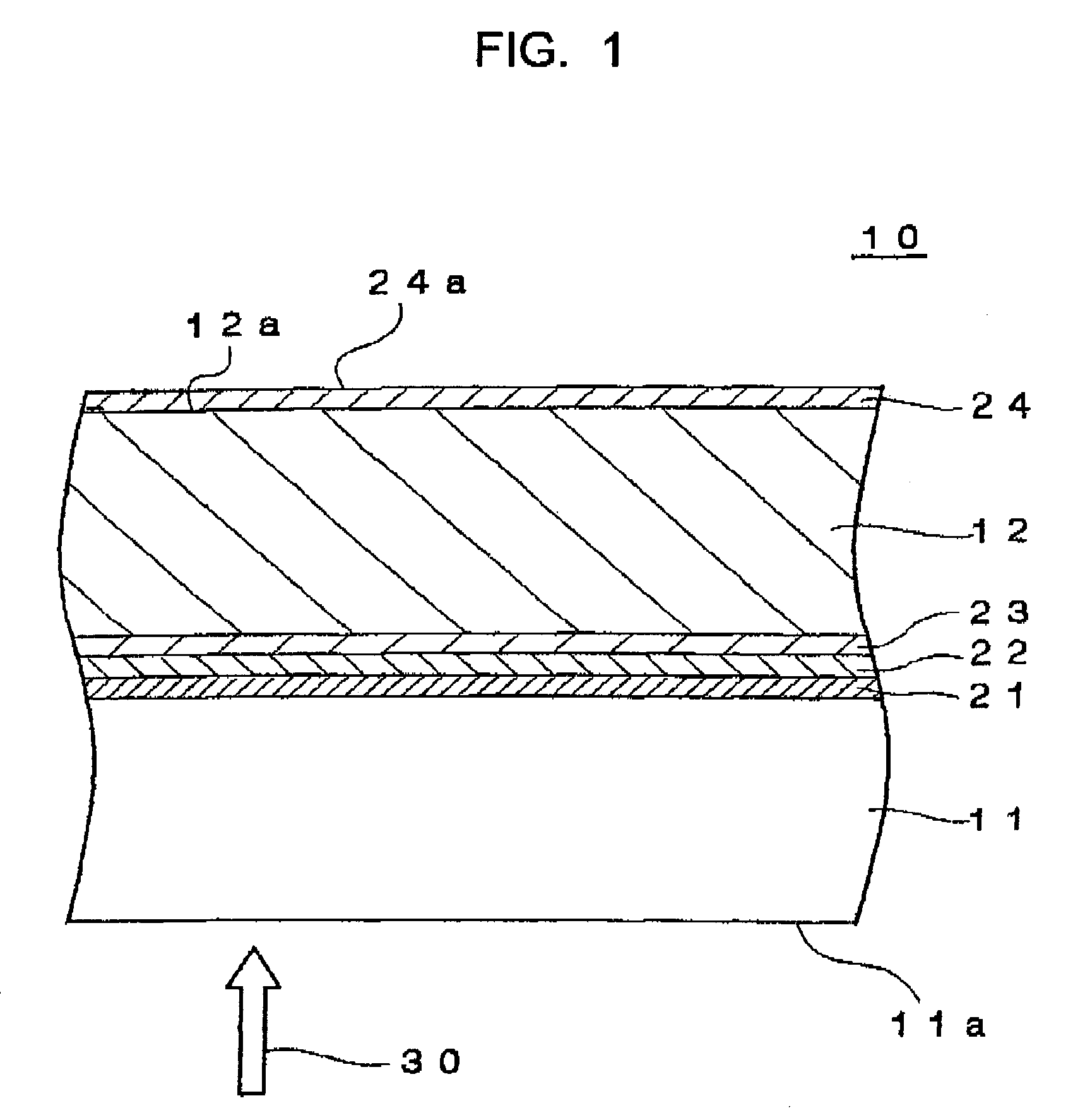Optical recording medium and method for making the same
a technology of optical recording media and optical recording layer, which is applied in the field of optical recording media, can solve the problem that the supporting substrate cannot be used in the standard process, and achieve the effect of reducing the average surface roughness (ra) of the ink-receiving layer and simplifying the production process
- Summary
- Abstract
- Description
- Claims
- Application Information
AI Technical Summary
Benefits of technology
Problems solved by technology
Method used
Image
Examples
Embodiment Construction
[0036]The preferred embodiments of the present invention will now be described in detail with reference to the attached drawings.
[0037]FIG. 1 is a schematic cross-sectional view showing the structure of an optical recording medium according to a preferred embodiment of the present invention.
[0038]An optical recording medium 10 of this embodiment is disk-shaped and has a diameter of about 120 mm and a thickness of about 1.2 mm. As show in FIG. 1, the optical recording medium 10 includes a light-transmissive substrate 11, a supporting substrate 12; a functional layer 21, a protective layer 22, and a bonding layer 23 between the light-transmissive substrate 11 and the supporting substrate 12; and an ink-receiving layer 24 disposed on the surface of the supporting substrate 12. The supporting substrate 12 is sometimes referred to as a “dummy substrate”.
[0039]Data can be read and / or written by irradiating a light-incident surface 11a with a laser beam 30 while rotating the optical record...
PUM
| Property | Measurement | Unit |
|---|---|---|
| Ra | aaaaa | aaaaa |
| surface roughness | aaaaa | aaaaa |
| thickness | aaaaa | aaaaa |
Abstract
Description
Claims
Application Information
 Login to View More
Login to View More - R&D
- Intellectual Property
- Life Sciences
- Materials
- Tech Scout
- Unparalleled Data Quality
- Higher Quality Content
- 60% Fewer Hallucinations
Browse by: Latest US Patents, China's latest patents, Technical Efficacy Thesaurus, Application Domain, Technology Topic, Popular Technical Reports.
© 2025 PatSnap. All rights reserved.Legal|Privacy policy|Modern Slavery Act Transparency Statement|Sitemap|About US| Contact US: help@patsnap.com



